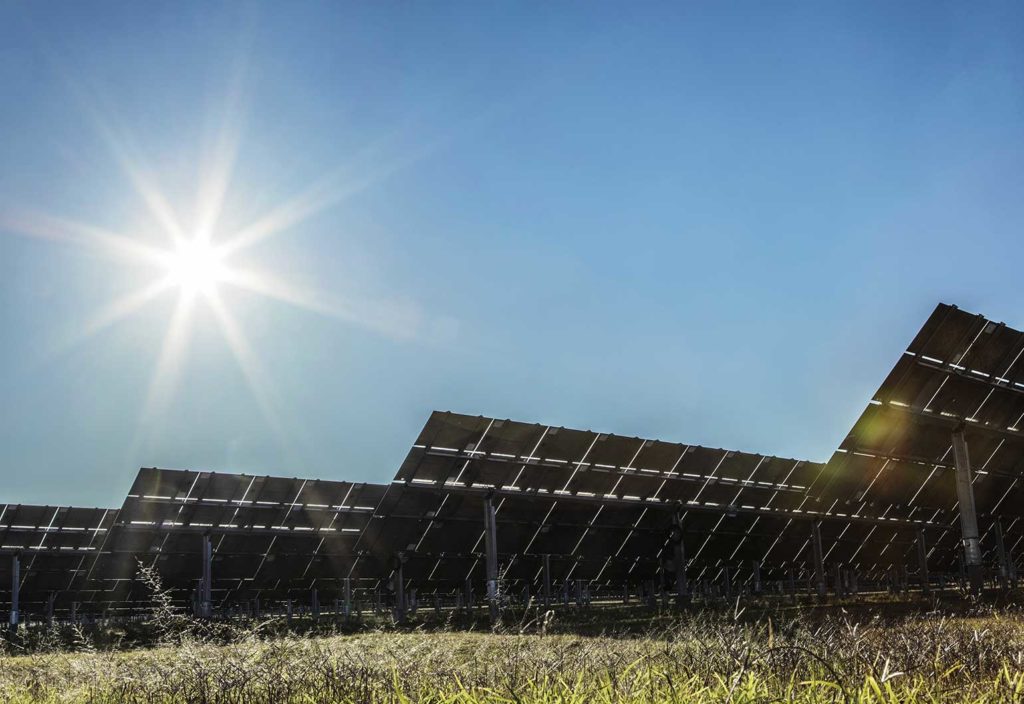In 2019, renewable energy contributed 24 per cent of Australia’s total electricity generation, responsible for supplying between 14 and 96 per cent of the electricity needs of Australia’s states.
While hydro-rich Tasmania continues to lead the way for renewables in Australia, across the country we’re seeing more cities and businesses moving towards renewables.
Here are four regions making inroads in renewable energy.
Ahead of the pack
The ACT has been 100 per cent renewable since 1 October last year, making it the world’s eighth major city, and the first outside Europe, to claim the status.
While the majority of the territory’s electricity comes from the National Electricity Market, four-fifths of which is generated from non-renewable sources, the ACT’s arrangement means that for every watt of power it consumes, it pays one back through renewable investments across the country.
These wind and solar farms include Hornsdale Wind Farm in South Australia, Coonooer Bridge Wind Farm in Victoria and Sapphire Wind Farm in NSW.
The move to renewables has cut carbon emissions by 40 per cent, and the ACT government has a legislated target to be carbon neutral by 2045.
Solar Sydney
The City of Sydney is also forging ahead with renewables, with the council recently announcing a new power purchase agreement (PPA).
Under this PPA, the council will source renewable electricity from wind and solar farms in regional New South Wales to cover all its operations, including 115 buildings, 75 parks, five pools and 23,000 street lights.
The largest standalone renewables agreement for an Australian council to date, three different generators will be included in the scheme: Sapphire Wind Farm, Bomen Solar Farm and Repower Shoalhaven.
Under this PPA, the electricity retailer, Flow Power, will purchase an amount of electricity equivalent to 100 per cent of the city’s usage, and then add it to the national electricity grid. The new scheme is set to save the City of Sydney up to $500,000 per year, while reducing carbon emissions by 20,000 tonnes per annum.
Adelaide all in
Not to be outdone by its eastern counterparts, the City of Adelaide is also making waves in the renewables space, recently switching to 100 per cent renewable electricity.
A first for a South Australian council, the City’s PPA will mean the City of Adelaide’s operations, including the Adelaide Aquatic Centre, UParks, depots and buildings, will be powered solely by renewables.
This power will be initially sourced from Clements Gap wind farm in mid-north South Australia, with two new solar farms being developed on the Eyre Peninsula (Streaky Bay) and South East (Coonalpyn).
The switch to renewables is set to reduce emissions by more than 11,000 tonnes – the equivalent to taking 3500 cars off the road.
Meanwhile, in Melbourne…
As part of the second wave of the Melbourne Renewable Energy Project (MREP 2), businesses across Melbourne also recently announced their transition to wind-powered energy.
A power purchase agreement facilitated by the City of Melbourne, seven large energy users will be included in the scheme: RMIT University, Deakin University, CBUS Property, ISPT, Fulton Hogan, Citywide Asphalt, and Mondelez International.
Under the agreement, Tango Energy will provide 110 GWh of renewable electricity per year to the purchasing group, used to power 14 shopping centres, nine office buildings, seven educational campuses, and four manufacturing facilities.
Yaloak South Wind Farm near Ballan will be the primary supplier of the wind power, in what is set to reduce greenhouse gas pollution by 123,000 tonnes per year.
